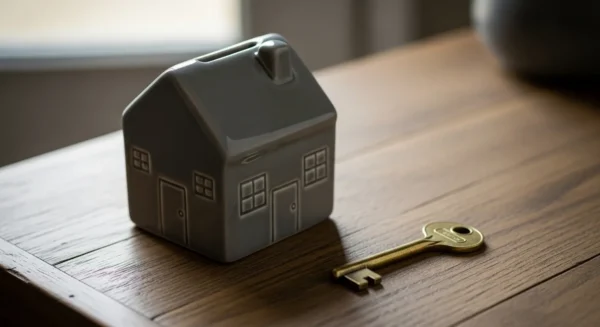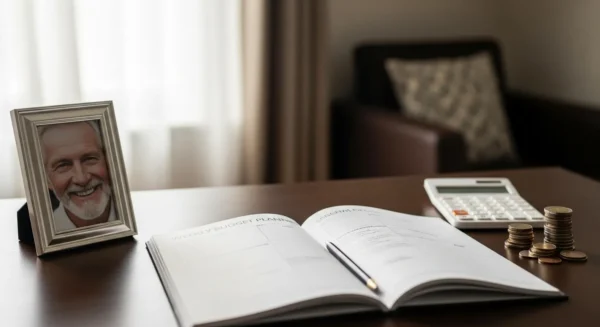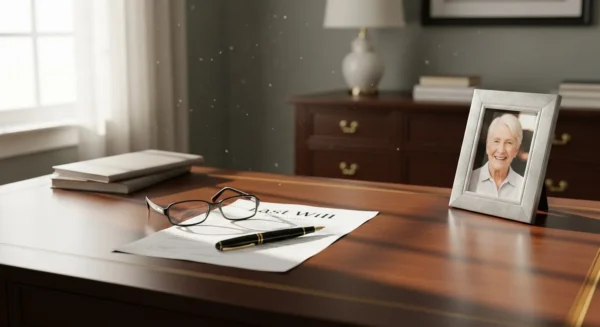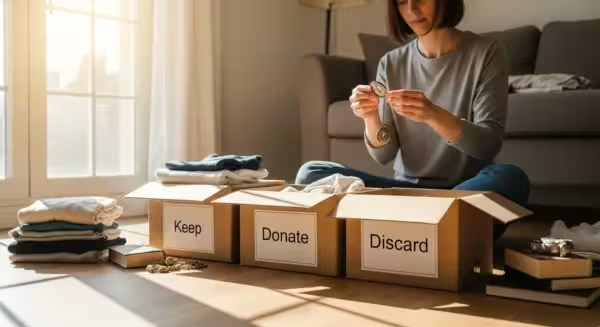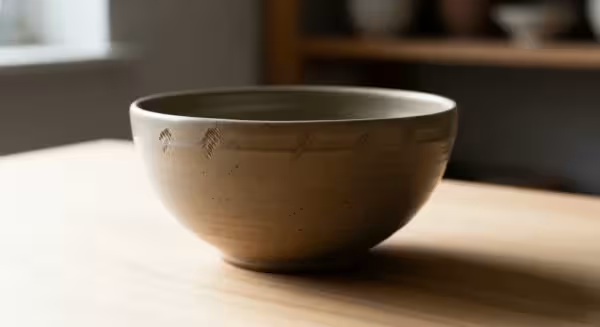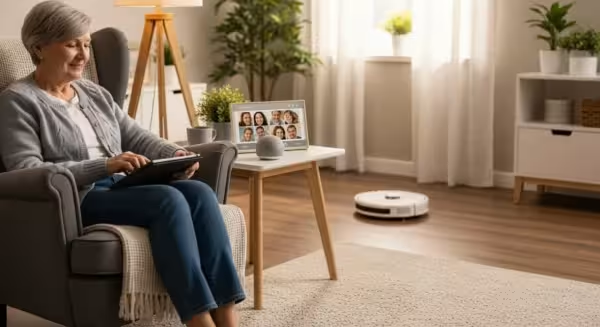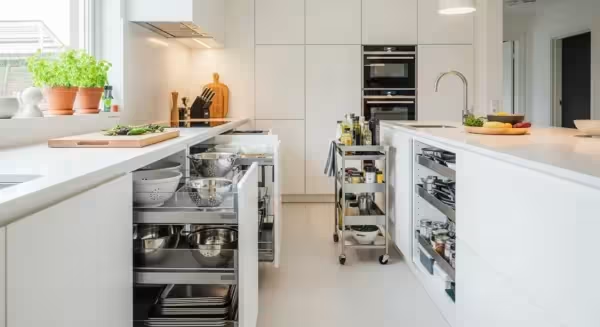
Making the decision to downsize is a powerful step toward a simpler, more manageable, and often more joyful chapter of life. It’s about making your home fit your current lifestyle, not the other way around. But let’s be honest: the process of sorting through a lifetime of possessions can feel overwhelming. Your home is more than just a building; it’s a collection of memories, milestones, and treasured objects.
This guide is here to support you through that journey. Think of it not as getting rid of things, but as curating your life. You are choosing what to bring into your future—a future with less cleaning, less stress, and more time for the people and hobbies you love. These senior downsizing tips are designed to be practical, gentle, and empowering. Let’s begin this rewarding process together.
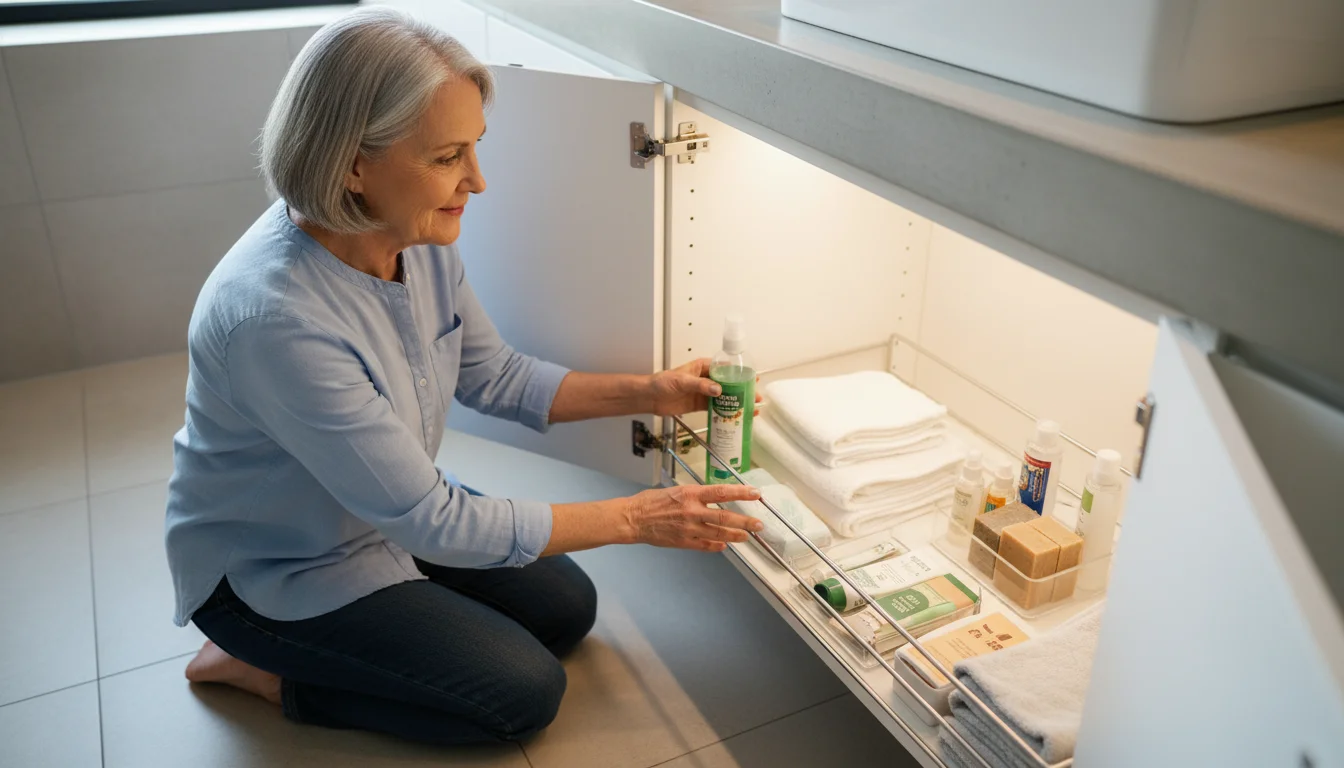
Start With One Small, Low-Emotion Area
The ‘Why’: The sheer scale of downsizing an entire home can stop you in your tracks before you even begin. By starting with a single, manageable space that doesn’t hold deep sentimental value—like a linen closet or a medicine cabinet—you build momentum. This approach provides a quick, visible win that boosts your confidence and makes the larger project feel achievable.
The ‘How’:
- Choose Your Spot: Pick a place that feels easy. The laundry room shelf, the junk drawer in the kitchen, or the bathroom cabinet are excellent choices. Avoid starting with old photo albums or your late spouse’s collection.
- Set a Timer: Give yourself just 15 or 20 minutes. This turns a huge task into a small, repeatable habit. Anyone can do something for 15 minutes.
- Use a Simple System: Get three boxes or bags and label them: Keep, Donate, and Discard. As you pick up each item, make a quick decision and place it in the appropriate box. Try to touch each item only once.
- Finish the Cycle: When the timer goes off, stop. Immediately take out the trash and put the donation box in your car. Seeing the instant result of a clearer space is a powerful motivator.
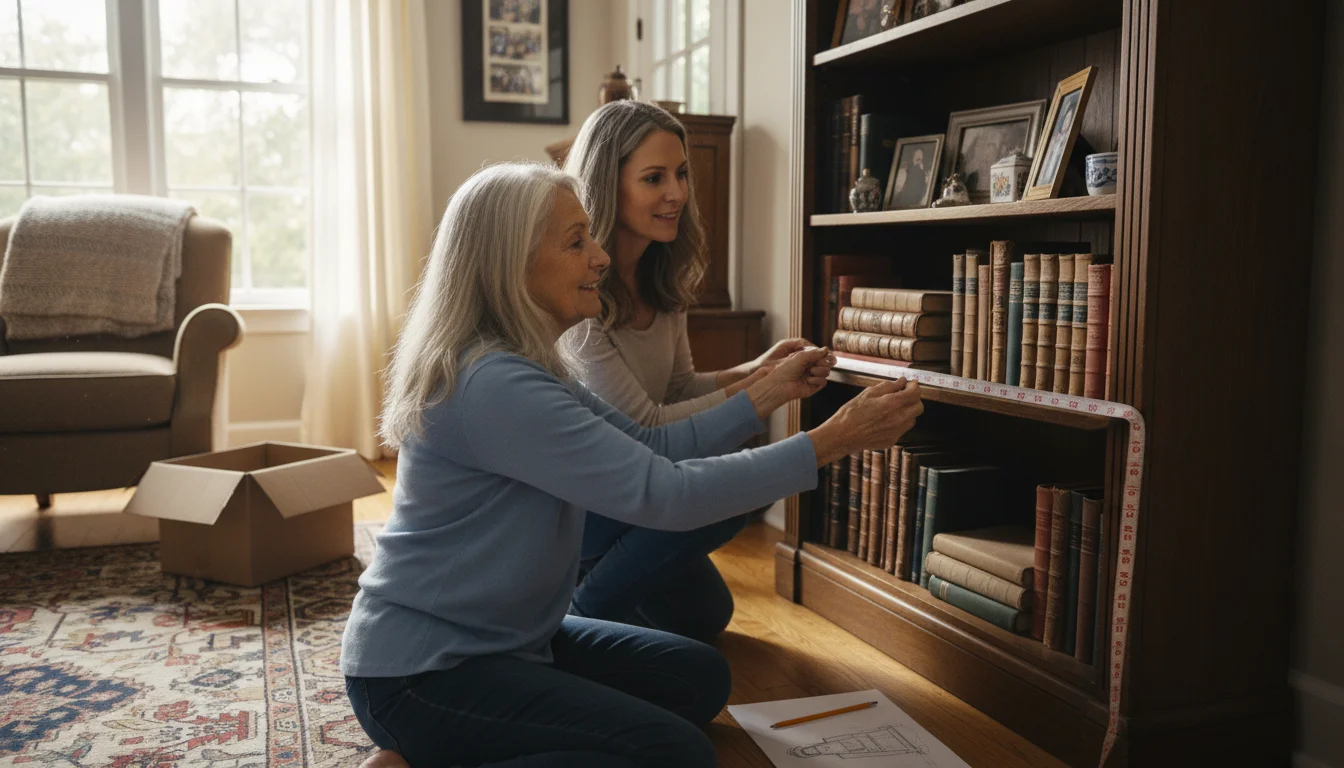
Visualize and Measure Your New Space
The ‘Why’: Downsizing isn’t about guesswork; it’s about planning. Without a clear picture of your new home, it’s impossible to know what will fit. Visualizing your future space and lifestyle provides a practical filter for every decision you make, turning abstract choices into concrete ones.
The ‘How’:
- Get a Floor Plan: If you can, get a copy of the floor plan for your new home. If not, visit with a tape measure and sketch it out, noting the dimensions of each room.
- Measure Your ‘Must-Keep’ Furniture: Identify the large items you can’t live without—your favorite armchair, the bed you love, a treasured bookshelf. Measure them and see where (or if) they will fit on your floor plan.
- Think in Zones: Consider how you will use the new space. Where will you read? Where will you host a friend for coffee? This helps you prioritize furniture that supports the life you want to live, rather than just filling a room. This is a key part of simplifying your space for a better life.

Adopt the One-Year Rule (With Kindness)
The ‘Why’: Our homes are often filled with “just in case” items. The One-Year Rule is a simple, non-emotional tool for evaluating these objects. It helps you honestly assess what you truly use and need for your current life, rather than the life you once lived or thought you might live.
The ‘How’:
- Ask the Question: As you go through items, especially in the kitchen, closets, and garage, ask yourself, “Have I used this in the last year?”
- Be Honest: If the answer is no, give yourself permission to let it go. This applies to old kitchen gadgets, hobby supplies for a craft you no longer do, or clothes that haven’t fit for years.
- The Exception Clause: This rule does not apply to highly sentimental items, important documents, or fine art. This is a practical decluttering tip, not a hard-and-fast command. Be kind to yourself; some things are kept for the joy they bring, not their utility.
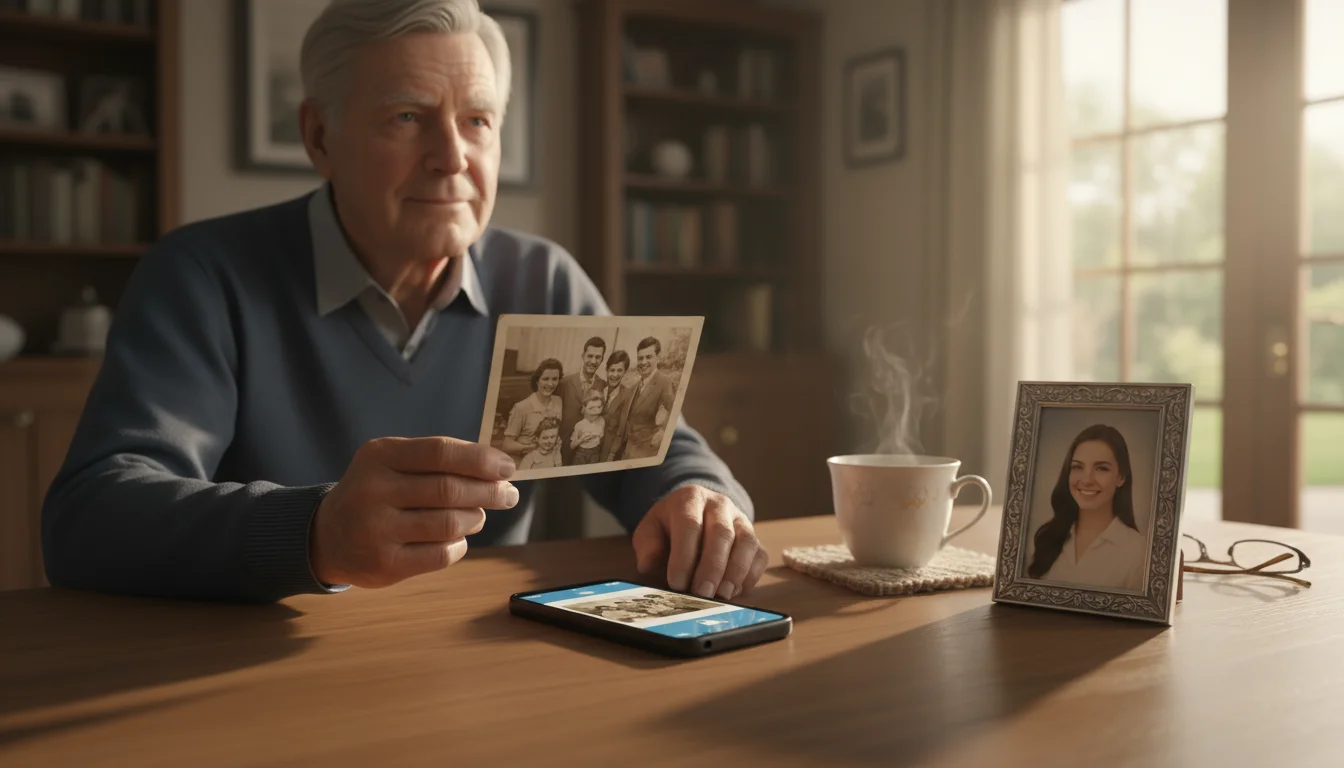
Digitize What You Can
The ‘Why’: Photographs, children’s artwork, important letters, and home videos hold precious memories but take up an enormous amount of physical space. Digitizing these items allows you to preserve the memory forever without the clutter, making them easier to share with family and protecting them from physical decay.
The ‘How’:
- Start Simply: You don’t need fancy equipment. Modern smartphones have excellent cameras and free scanner apps (like Google PhotoScan or the notes app on an iPhone) that can create high-quality digital copies.
- Do It in Batches: Set aside an hour on a Sunday afternoon to scan one photo album. Save the files in a clearly labeled folder on your computer (e.g., “Family Photos 1980s”).
- Consider a Service: For very large collections of photos, slides, or VHS tapes, professional digitizing services (like Legacybox or ScanCafe) can be a worthwhile investment. They do all the work for you.
- Share the Joy: Once digitized, you can easily create digital photo frames or share albums with children and grandchildren via email or a shared cloud folder.
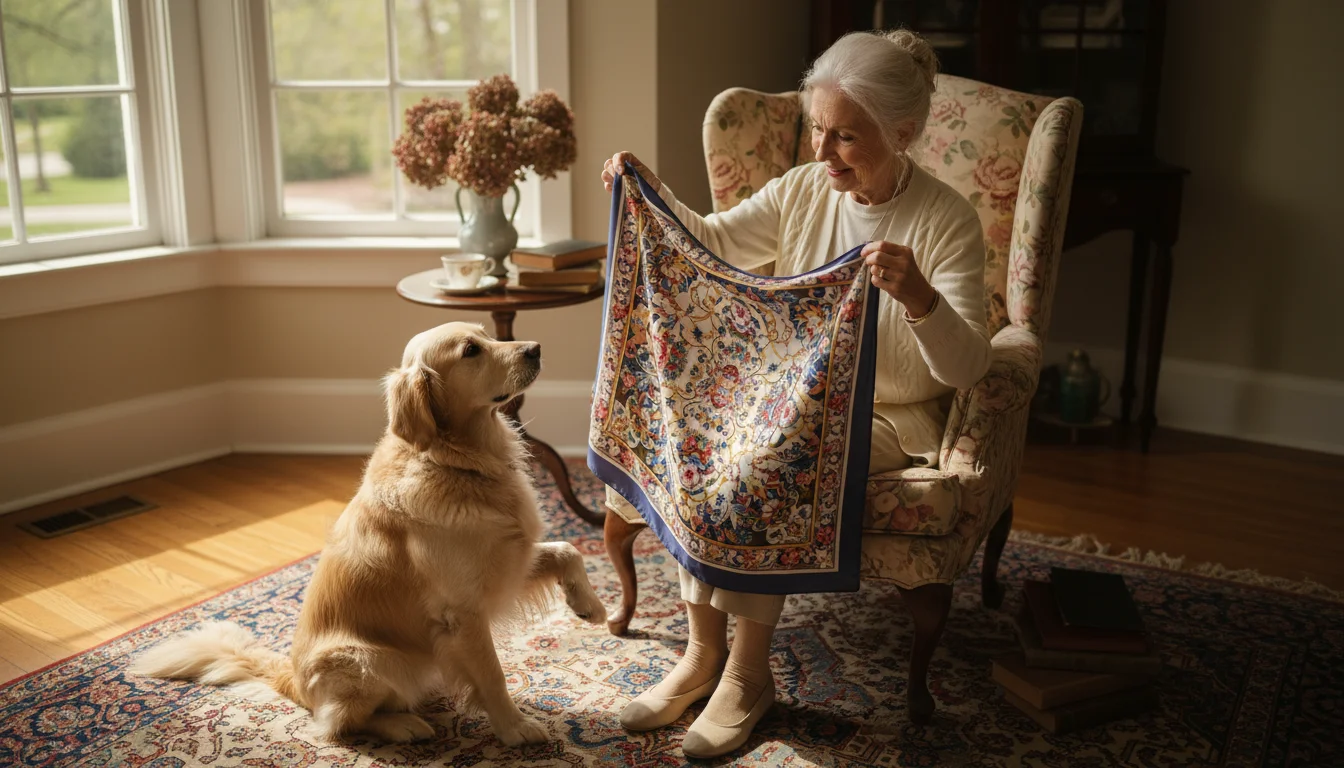
Give Your Items a ‘Next Home’
The ‘Why’: It is often much easier to part with an object when you know it is going to a good place where it will be used and appreciated. This shifts the focus from “losing” an item to “gifting” it, which can be a much more positive and rewarding experience.
The ‘How’:
- Family First: Before donating, ask your children or grandchildren if there are any specific items they would love to have. Don’t burden them with things they don’t want; instead, invite them to “shop your home” for meaningful pieces.
- Research Charities: Look for local charities that align with your values. A women’s shelter may need professional clothing, an animal shelter may need old towels and blankets, and a program for veterans may need furniture. Many organizations, like Habitat for Humanity ReStore or the Salvation Army, offer free pickups for larger items.
- Consignment or Sale: For valuable items like antiques, fine china, or collectibles, consider a consignment shop or an online marketplace. This can help offset some of the costs of moving.
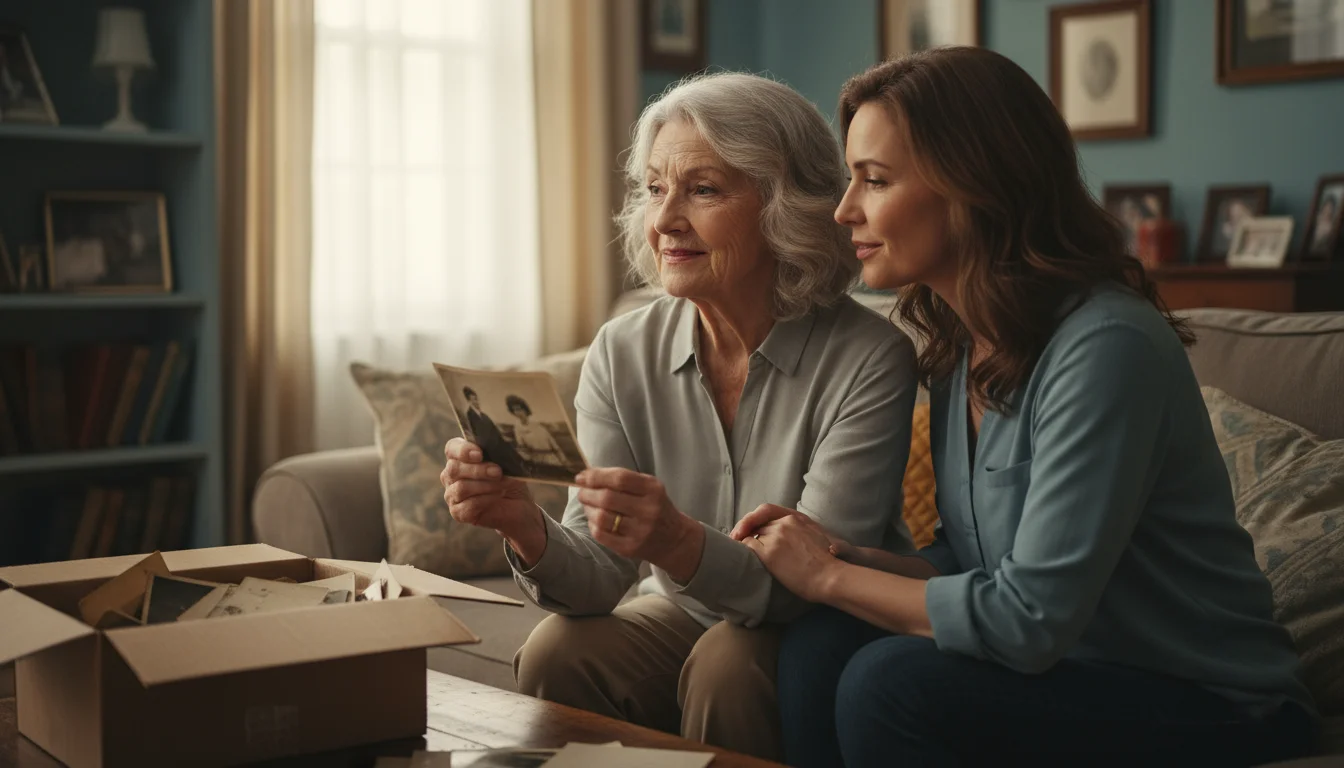
Tackle Sentimental Items Last
The ‘Why’: Emotional decisions are the most draining. If you start with sentimental items, you risk becoming emotionally exhausted and giving up. By saving these for last, you will have already built up your “decluttering muscles” and momentum from clearing out less-emotional areas. You’ll be in a better headspace to make thoughtful choices.
The ‘How’:
- Schedule Dedicated Time: Set aside a specific, calm time to go through these items. It can be helpful to have a supportive friend or family member with you.
- Tell the Story: As you hold an object, tell its story aloud to your companion or even just to yourself. This honors the memory associated with the item and can help you process the emotion, making it easier to decide its fate.
- Keep a Representative, Not the Whole Collection: You don’t need to keep all 20 of your mother’s teacups to remember her. Choose one or two that are your absolute favorites and display them beautifully. Take a photo of the rest of the collection before letting it go. This principle of minimalism for seniors is about quality over quantity.

Don’t Be Afraid to Ask for Help
The ‘Why’: Downsizing is a massive physical and emotional project. Trying to do it all by yourself can lead to burnout, injury, or feelings of isolation. Involving others is a sign of strength and self-awareness, and it can turn a daunting task into a collaborative and even enjoyable one.
The ‘How’:
- Rally the Troops: Let your family and close friends know your timeline and what you need. Be specific. Instead of saying “I need help,” try “Could you help me move boxes to the garage for two hours next Saturday?”
- Hire a Professional: If your budget allows, consider hiring a professional senior move manager or a professional organizer. These experts are specifically trained in senior downsizing and can manage the entire process with compassion and efficiency, from sorting and packing to setting up your new home.
- Share the Load: You can handle the decision-making while a younger family member does the heavy lifting. You are the project manager; they are your team.
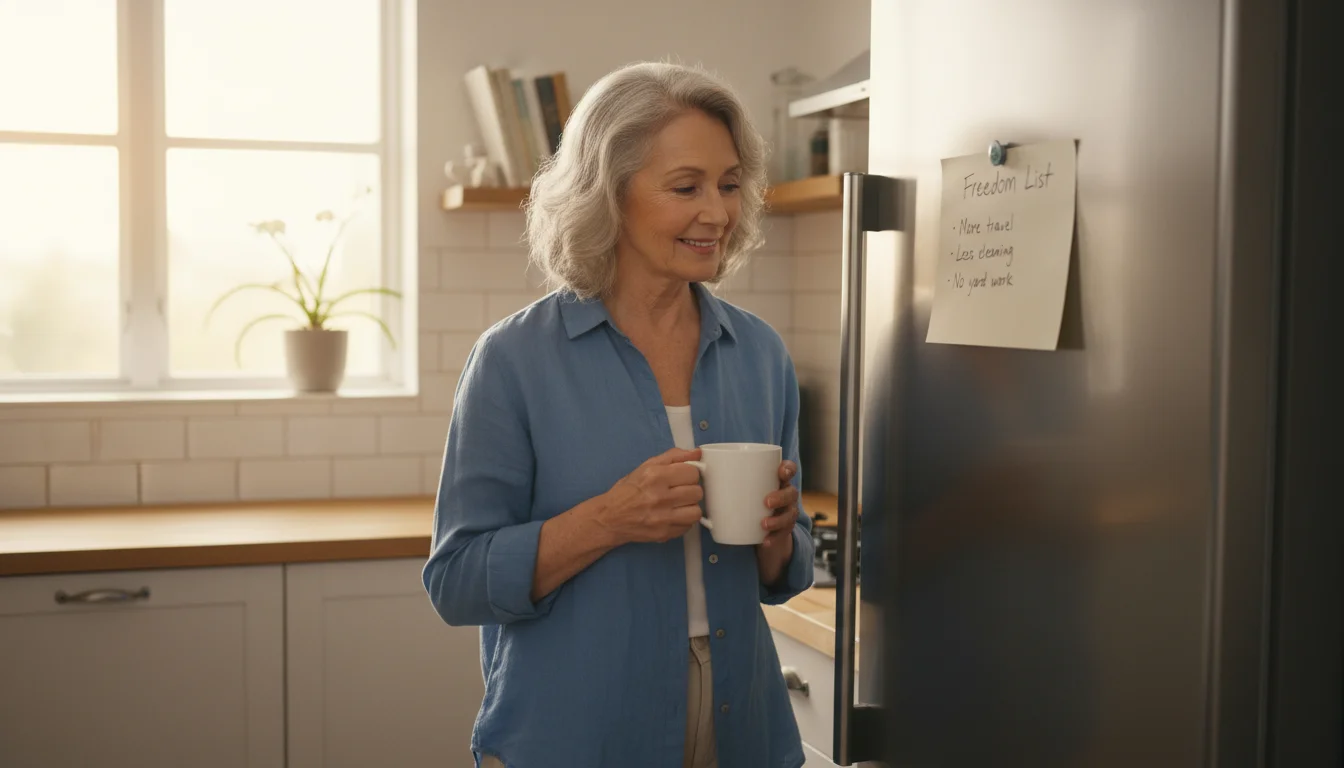
Focus on the Freedom, Not the Stuff
The ‘Why’: Your mindset is everything. If you frame downsizing as a loss, it will feel like one. If you reframe it as a gain—gaining time, freedom, and energy—the entire process becomes an exciting step toward a better future. This is your chance to shed burdens and design a lighter, easier life.
The ‘How’:
- Create a ‘Freedom List’: Write down all the things you will gain by simplifying your space. Examples might include: “Less time spent cleaning,” “Lower utility bills,” “More money for travel,” “No more worrying about yard work,” or “A safe, accessible home.”
- Post it Prominently: Keep this list on your refrigerator or bathroom mirror. When you feel overwhelmed or sad about letting something go, read your list and remind yourself of your ultimate goal.
- Celebrate Your Progress: After clearing out a room or finishing a tough category, reward yourself. Go out for a nice lunch, see a movie, or spend time on a hobby. Acknowledging your hard work reinforces the positive nature of the transition.
Remember, the goal of downsizing is to make your life better. It’s a thoughtful process of choosing what truly serves you and brings you joy. Be patient and compassionate with yourself every step of the way. By simplifying your space, you are opening the door to a new phase of life filled with more freedom, ease, and happiness.
For expert guidance on senior health and finance, visit Medicare.gov, National Institute of Mental Health (NIMH), National Institutes of Health (NIH), Centers for Medicare & Medicaid Services (CMS) and Social Security Administration (SSA).
|
Fact-Checked Content
Our editorial team reviews all content for accuracy and updates it regularly. Learn about our editorial process →
|



